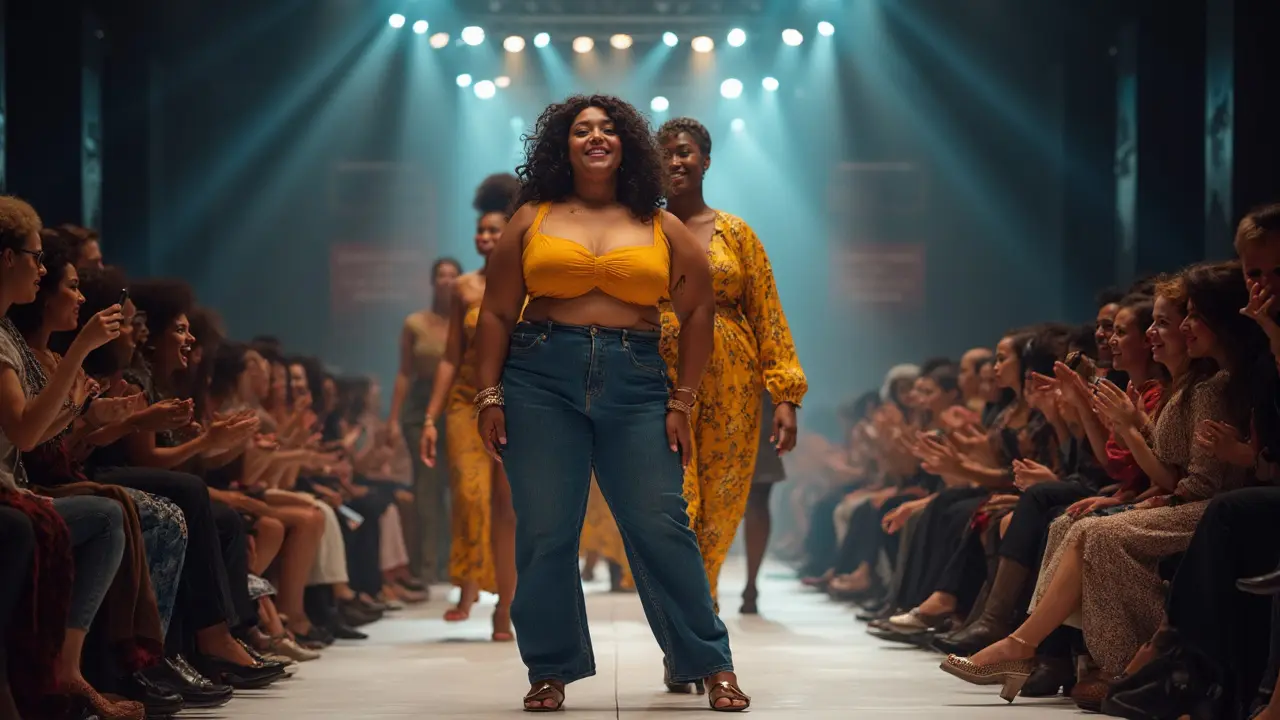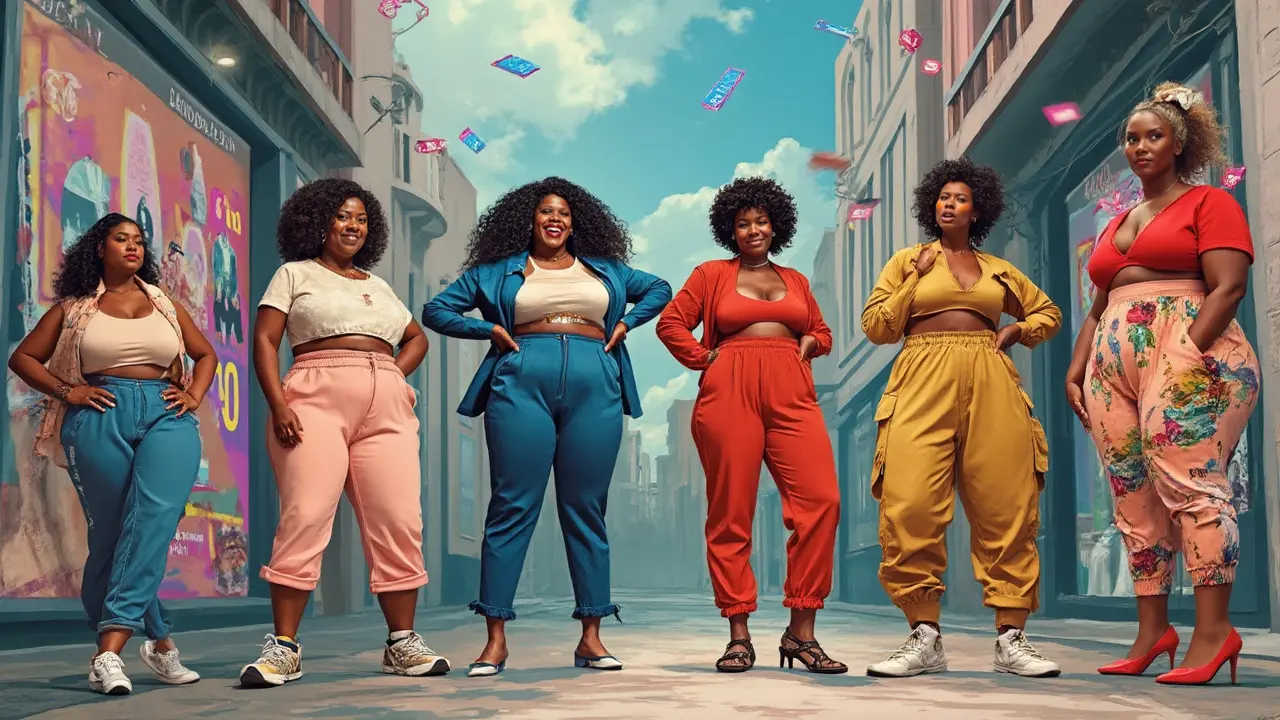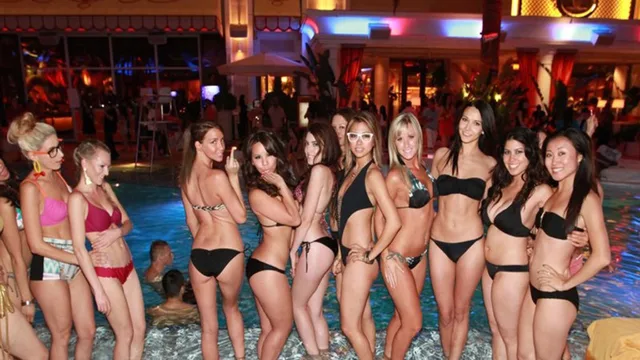
For a long time, runways and magazines only showed one type of body, leaving a lot of people feeling left out. That’s changing fast. Curvy models are popping up everywhere, showing off all kinds of shapes and sizes, and honestly? It’s about time. People want to see bodies that look like theirs. This isn’t just about fashion—it’s about feeling seen and celebrated.
If you scroll through Instagram or TikTok, it’s clear: curvy models are everywhere, working with huge brands and starting real conversations about confidence. Not only does this mean more choices in stores, it’s also inspiring a ton of people to feel good in their own skin. Want to get in on this shift, whether you’re looking to model or just want to see better options in your closet? You’re in the right spot.
- How Curvy Models Took the Industry by Storm
- The Real Impact on Fashion and Shopping
- Tips for Aspiring Curvy Models
- How Brands and Agencies Can Do Better
- Staying Safe and Confident in the Spotlight
How Curvy Models Took the Industry by Storm
It wasn’t long ago that seeing a curvy model in a fashion ad or magazine felt rare. Now, big names like Ashley Graham, Paloma Elsesser, and Precious Lee are everywhere—from Sports Illustrated covers to top luxury runways. Back in 2016, Ashley Graham made headlines as the first plus-size model to appear on the cover of Sports Illustrated’s Swimsuit Issue. That single moment sent shockwaves through both fashion and mainstream media. Suddenly, brands realized people were hungry for more realistic representation.
Big hitters like Christian Siriano threw open the doors to models of all sizes at New York Fashion Week. Dove’s “Real Beauty” campaign and Aerie’s no-retouching promise? Yep, those weren’t just marketing stunts. They changed expectations. More brands like Savage X Fenty by Rihanna and Old Navy now regularly feature curvy models in every new launch.
Here’s why this matters: when these models started landing major gigs, the fashion world saw a spike in sales for inclusive sizes. A 2023 report from the NPD Group showed that plus-size clothing made up about 19% of women’s apparel sales in the US. Social media did a lot of the heavy lifting too. Models and regular folks alike started posting unfiltered photos and talking openly about body confidence. These honest posts gained followers and brand deals, shifting the entire industry conversation.
This shift wasn’t only about marketing, either. A study by Florida State University in 2018 found that people felt better about their own bodies after seeing images of curvy models instead of ultra-thin ones. Not only did that mean happier customers, but it also created space for more talent to thrive—no matter their size.
The bottom line: The rise of curvy models didn’t just happen overnight. It took bold moves, smart social media, and a whole lot of people refusing to be invisible. Now, seeing different body types on runways and in ad campaigns is finally becoming normal, and the industry is way more interesting because of it.
The Real Impact on Fashion and Shopping
The push for real variety in fashion has totally reshaped how brands think, sell, and connect with customers. Having curvy models out front means companies finally have to make clothes that fit more than just one body type. Think about it—brands like Savage X Fenty, ASOS, and Aerie have built huge followings by showing their clothes on a serious mix of sizes. And it’s not just for show. When people see models who look like them, they trust a brand more and actually buy more.
A big moment came when Sports Illustrated put Ashley Graham, a curvy model, on its swimsuit issue cover in 2016. Right after that, the magazine saw a spike in both social media engagement and subscriptions, proving people are hungry for this change. Nordstrom, in 2019, was one of the first big shops to use size-inclusive mannequins in stores, and sales on extended sizes jumped by more than 20% that year. Here’s a quick look at how shoppers react when brands get it right:
| Brand | Year | Change Made | Result |
|---|---|---|---|
| Aerie | 2014 | Launched "Aerie Real" with unretouched photos | 32% sales increase in first year |
| Savage X Fenty | 2018 | Diverse models in marketing | Over one million customers in first year |
| Nordstrom | 2019 | Inclusive mannequins & displays | 20% boost in extended sizes |
Showing real bodies actually helps brands stand out—and it’s what shoppers want. As model Paloma Elsesser said in a Vogue interview,
“If you’re only making clothes for one type of woman, you’re missing out on a huge part of the world.”
Want more proof? Google searches for “plus-size fashion” have jumped over 200% since 2017. Even smaller, indie brands are popping up just to serve this new energy. The message is simple: shoppers want fashion that fits real lives, not some made-up standard. If you’ve ever felt ignored in the store or online, the industry is finally starting to catch up.

Tips for Aspiring Curvy Models
If you’ve ever thought about breaking into the world of curvy models, knowing where to start can save you lots of wasted time. The industry loves authenticity, so first things first: be yourself. Brands need models who look confident in their own skin, not folks who are trying to squeeze themselves into someone else’s idea of "model material." Big names like Ashley Graham and Paloma Elsesser built their careers on being true to themselves, not shrinking to fit the mold.
Start with photos. You don’t need expensive headshots, especially at the beginning. Fresh, natural lighting and honest photos (no heavy filters) are what agencies look for. A basic portfolio with clear face and full-body shots is all you really need to get noticed. Some well-known agencies accepting curvy talent include IMG Models, Wilhelmina, and Ford Models, and they’ve all beefed up their plus-size divisions since 2020.
Learn the lingo and avoid scams. Real agencies won’t ever ask you for upfront fees—run if they do. If something feels off, check the Better Business Bureau site and do a quick background search on the company. It’s better to walk away than get caught in a scam.
- Practice posing in front of the mirror. Seeing how outfits fit and move can help nail that agency casting, and it’s a trick a lot of pros use.
- Keep your measurements updated—bust, waist, hips, height. Most agencies ask for those before anything else.
- Stay active on social media, but be real. It’s one thing to see glossy brand campaigns, but followers want to see what everyday confidence looks like.
Getting picked depends on timing and persistence. It can take dozens of castings or submissions to land the right job, so don’t take rejection personally. Remember, top curvy models like Precious Lee tried and failed a bunch of times before they made it.
For a bit of perspective, here’s what the numbers looked like for plus-size and curvy models in recent years:
| Year | Top Marketed Plus-Size/Curvy Models | Percent of Runway Slots (NY Fashion Week) |
|---|---|---|
| 2021 | ~50 | 21% |
| 2023 | ~80 | 23% |
| 2024 | ~100 | 26% |
So, stick with it. Every big name in this business started somewhere, and there’s room for you too.
How Brands and Agencies Can Do Better
Brands and agencies have a massive role in shaping how the world sees beauty, but a lot still miss the mark when it comes to representing real, diverse bodies. Here’s where things often go wrong: sometimes brands add a single curvy model to tick a box, or use heavy airbrushing that erases what makes people unique. That doesn’t help anyone.
If brands want to show true inclusivity, they need to walk their talk. Take Savage X Fenty, for example—Rihanna’s line regularly features models across a wide size range, including men and women of all shapes. Their annual fashion shows go viral not just because the clothes are fun, but because viewers see themselves on the runway. People connect with brands that show real bodies, not just a carefully staged illusion.
Here are a few things brands and agencies can do right now to support curvy models and push the industry forward:
- Book models in a truly broad range of sizes, not just the same few 'plus-size' faces.
- Stop retouching away natural features like stretch marks or rolls. Showing real skin matters more than you think.
- Train stylists, photographers, and marketing teams to work confidently with all body types, so curvy models get clothes that fit and lighting that flatters.
- Ask for feedback from curvy models about their experience and use it to fix what’s not working.
- Feature curvy models right alongside straight-size models, not in a separate campaign or webpage. Integration is the goal.
It’s not rocket science, but it does take effort. Real change happens when brands move past performative gestures and actually invite curvy people to the table—in castings, boardrooms, and campaigns. And guess what? When companies do it right, shoppers notice. They feel more loyal to brands that care about people, not just profit.

Staying Safe and Confident in the Spotlight
If you want to make it as a curvy model, it’s not just about loving the camera. The spotlight can get tough. You’ll run into online trolls, scams, even body-shaming. Here’s how to protect yourself and keep your confidence strong.
First up, watch for modeling scams. If an agency asks for fees up front, that’s a red flag. Real, legit agencies make their money when you do—never before. Some scammers also send “casting calls” through sketchy emails or DMs. Always check if the agency has a real website, actual client roster, and social reviews. Sites like Model Alliance and the Better Business Bureau list complaints and help you check if an agency’s legit.
Online safety is huge. Personal info should stay private. Never share your home address, phone numbers, or travel plans on public social media. Use separate email accounts for jobs, and turn on two-factor authentication for extra protection. One good hack: always Google your own name and images every so often, so you know what’s out there about you.
| Risk | What to Watch For | Protective Move |
|---|---|---|
| Fake Agencies | Promises of "fast fame" and up-front fees | Research online, never pay in advance |
| Online Harassment | Trolling, DMs, doxxing | Block/report accounts, set limits on messages |
| Image Misuse | Unapproved use of photos | Watermark images, monitor web for misuse |
Confidence is your superpower, but it takes work. If trolls show up in your comments, don’t take it personally—most are just there for attention. Stay close to friends and family, and join online groups where you can swap support and advice. If you find yourself doubting, look up curvy model Lizzo’s TED Talk or check out Ashley Graham’s interviews on dealing with negativity—real inspiration from people who’ve handled the heat.
Stats show that 54% of plus-size and curvy models have faced online harassment, according to a 2024 survey by Fashion Model Directory. The good news? Models who build social circles and talk about their experiences say they’re more likely to bounce back fast.
So if you’re stepping into the limelight, protect your privacy, stay sharp, and never let trolls decide your worth. The more safe and confident you feel, the more your true self—inside and out—can shine for everyone to see.



